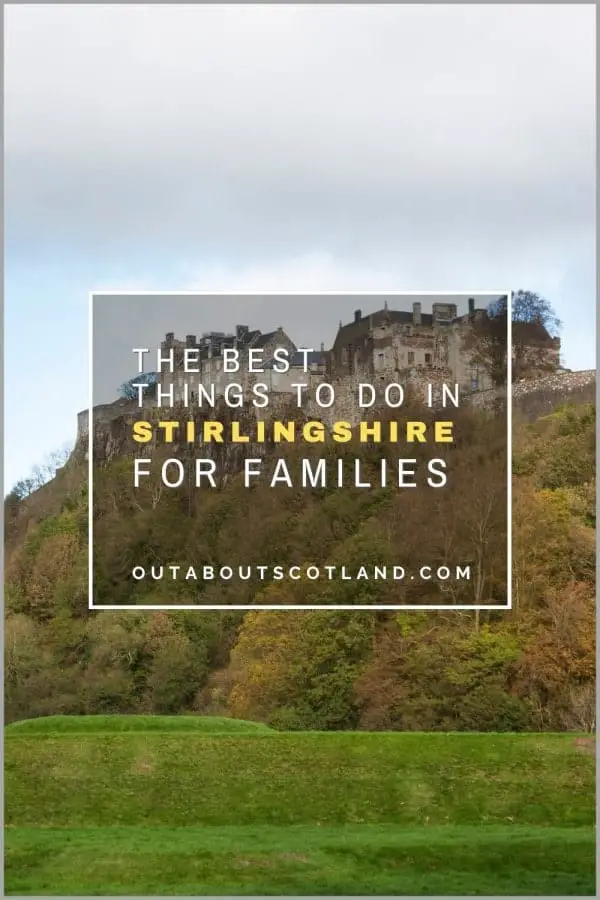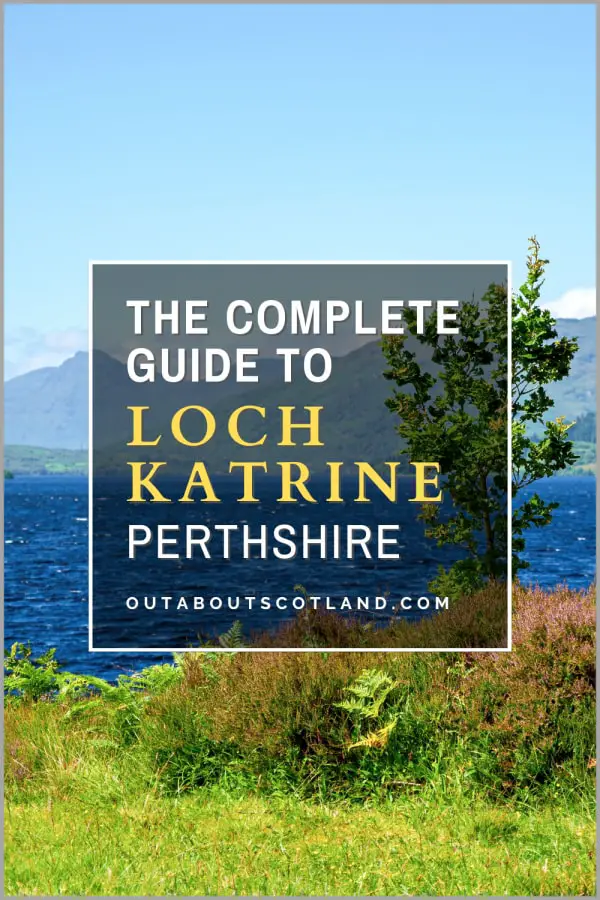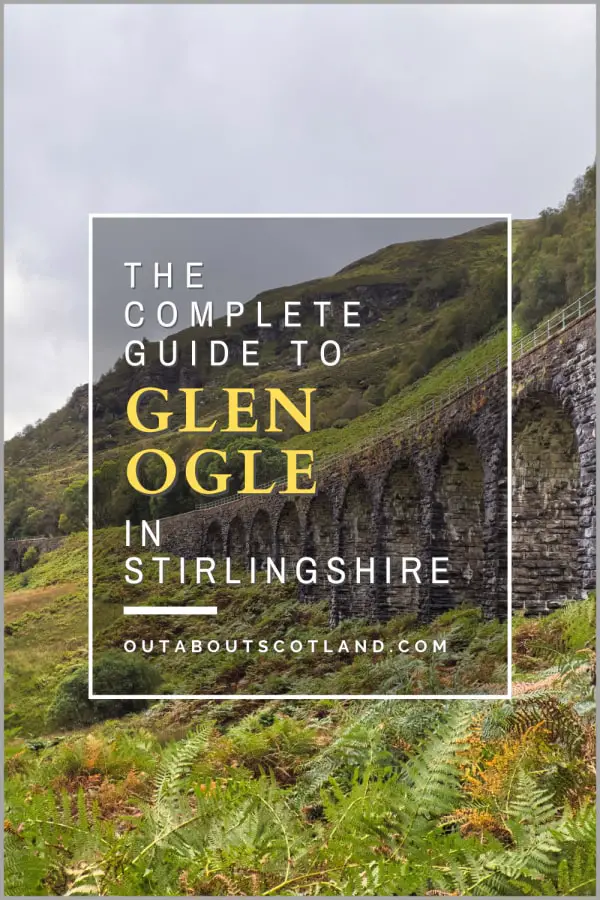Stirling Castle, located in the heart of Stirlingshire, is one of the largest and most important castles in Scotland, both historically and architecturally. Most of the principal buildings of the castle date from the fifteenth and sixteenth centuries, while the outer defences fronting the town date from the early eighteenth century.
The castle’s long, turbulent history involves great figures from Scotland’s past like William Wallace, Robert the Bruce, and Mary Queen of Scots. Visitors can enjoy highlights like the stunning views from the castle’s ramparts, the grandeur of the Great Hall, and the beautiful Renaissance decorations of the Royal Palace.
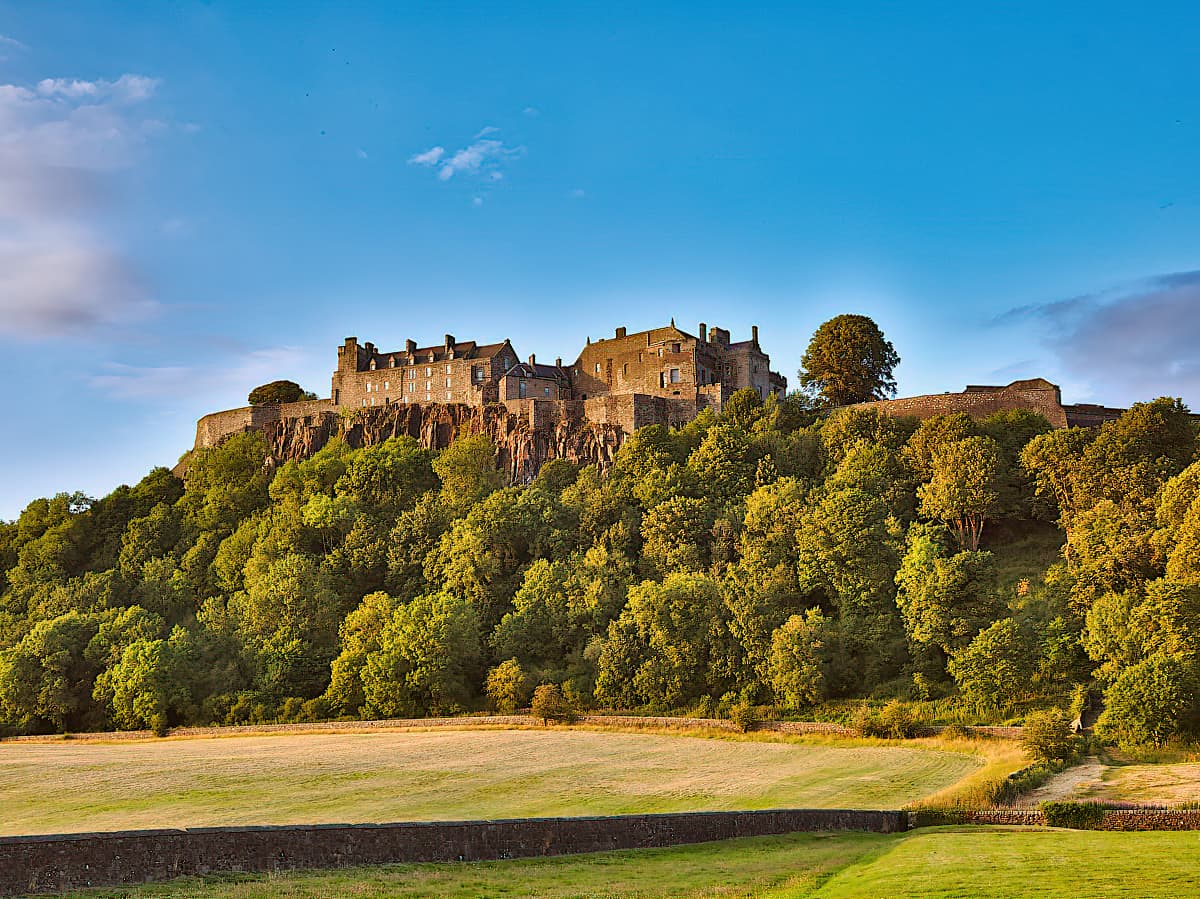
| Address: | Castle Esplanade, Stirling, FK8 1EJ |
| Opening Hours: | 1 April - 30 September 9.30 am to 6 pm (last entry 5 pm) 1 October - 31 March 9.30 am to 5 pm (last entry 4 pm) |
| Admission Price: | Adult (16-64yrs) £18.00 Concession (65yrs+ and unemployed) £14.50 Child (5-15yrs) £11.00 Family (1 adult, 2 children) £35.50 Family (2 adults, 2 children) £52.00 Family (2 adults, 3 children) £61.50 |
| Parking: | Paid on-site parking, maximum 4 hours £4 |
| Contact: | +44 (0)1786 450 000 |
| Facilities: | Toilets, gift shop, cafe, partial disabled access, guided tours, audio guide |
| Photos: | Virtual Tour YouTube Video |
Overview
Stirling Castle sits on top of Castle Hill – the enormous outcrop that can be seen for miles around in this lovely part of the Stirlingshire countryside. For hundreds of years, it served Scotland both as a defensive military position and as a royal palace, but today it’s one of the nation’s highest-rated tourist attractions.
This castle is drenched in history, with many of the still-intact buildings dating from the 15th and 16th centuries, but its story begins in the early 12th century when King Alexander I established a chapel on top of Castle Hill. A fortress was later added for the king’s troops, which eventually expanded into the castle that we see today. While most of the existing castle dates from the 15th and 16th centuries, there are a few structures that remain from the 14th century.
The castle covers an area of about 60,000 square feet and the main buildings include the palace, the great hall, and the chapel royal. The castle is also home to the Stirling Heads Gallery where you can see a collection of 16th-century oak medallions, or for a more interactive experience, head to the Regimental Museum where you can learn about the Argyll and Sutherland Highlanders.
If you’re interested in the history of the castle, there are guided tours and interpretive displays that tell the story of its turbulent past, after which you can enjoy the beautiful gardens, especially the Queen Anne Garden, which is a perfect spot for a relaxing stroll.
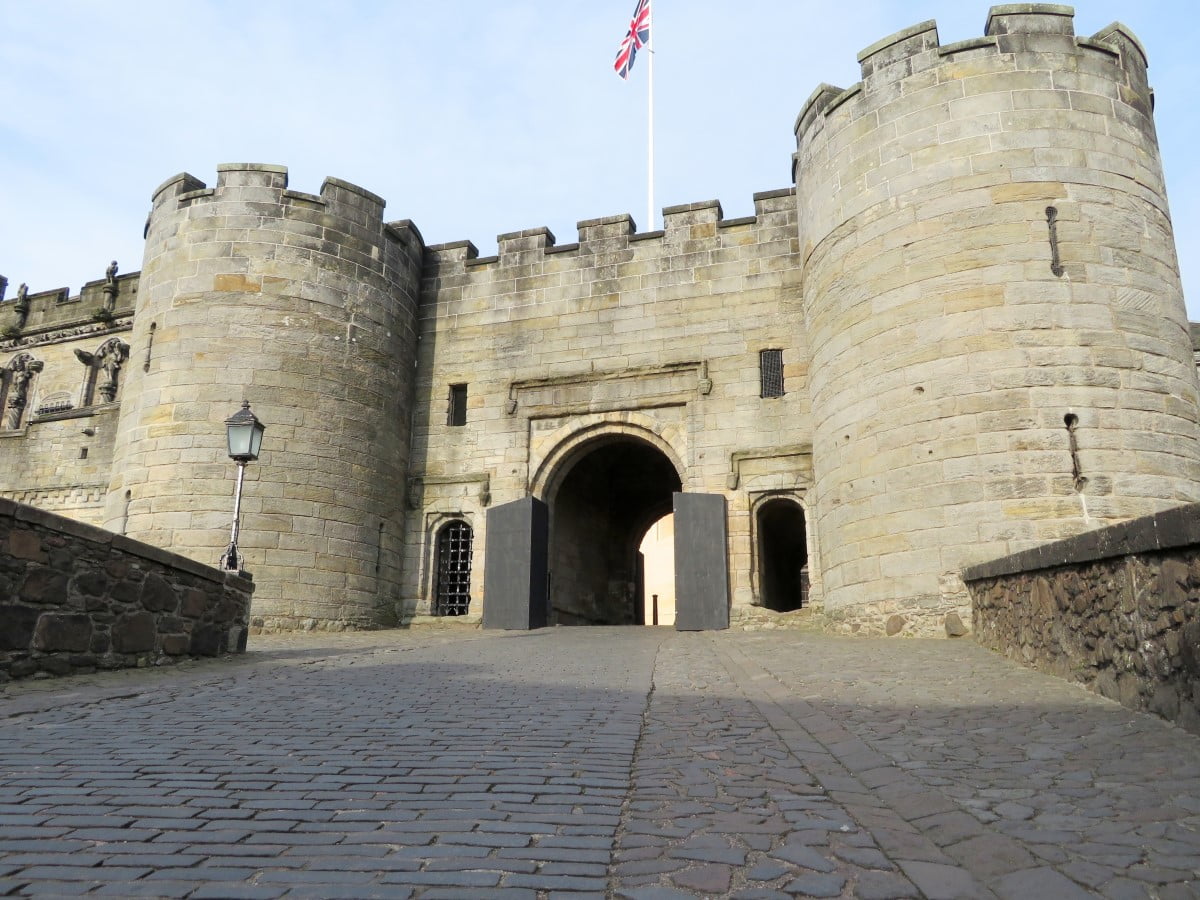
Book Tours in Scotland
The Highlights
1: Stirling Castle is one of the largest and most important castles, both historically and architecturally, in Scotland. It was a central location during Scotland’s Wars of Independence and was the childhood home of Mary, Queen of Scots. Visiting the castle offers an insight into Scotland’s past and the lives of its royal court.
2: The castle is a stunning example of Renaissance architecture.The Palace, in particular, is one of the best-preserved Renaissance buildings in the UK. Its carvings, sculptures, and period furnishings provide a glimpse into the opulence of the Scottish court in the 16th century.
3: Set on a volcanic rock overlooking the city of Stirling, the castle offers breathtaking panoramic views. From its battlements, visitors can see the Wallace Monument, the site of the historic Battle of Stirling Bridge, and the beautiful landscape that surrounds Stirling.
Visiting Tips
1: The tickets are pricey, but you can save on entry costs by getting a Historic Environment Scotland membership which allows unlimited free entry to all HES sites in Scotland.
2: Visit the nearby Wallace Monument, which you can see from the castle terrace, or if you have bored kids with you, take the short drive up the A84 to Blair Drummond Safari Park.
3: If you’d like to visit another famous castle in Stirlingshire, you’ll find Doune Castle (a filming site for several TV shows and movies) just a 20-minute drive away.
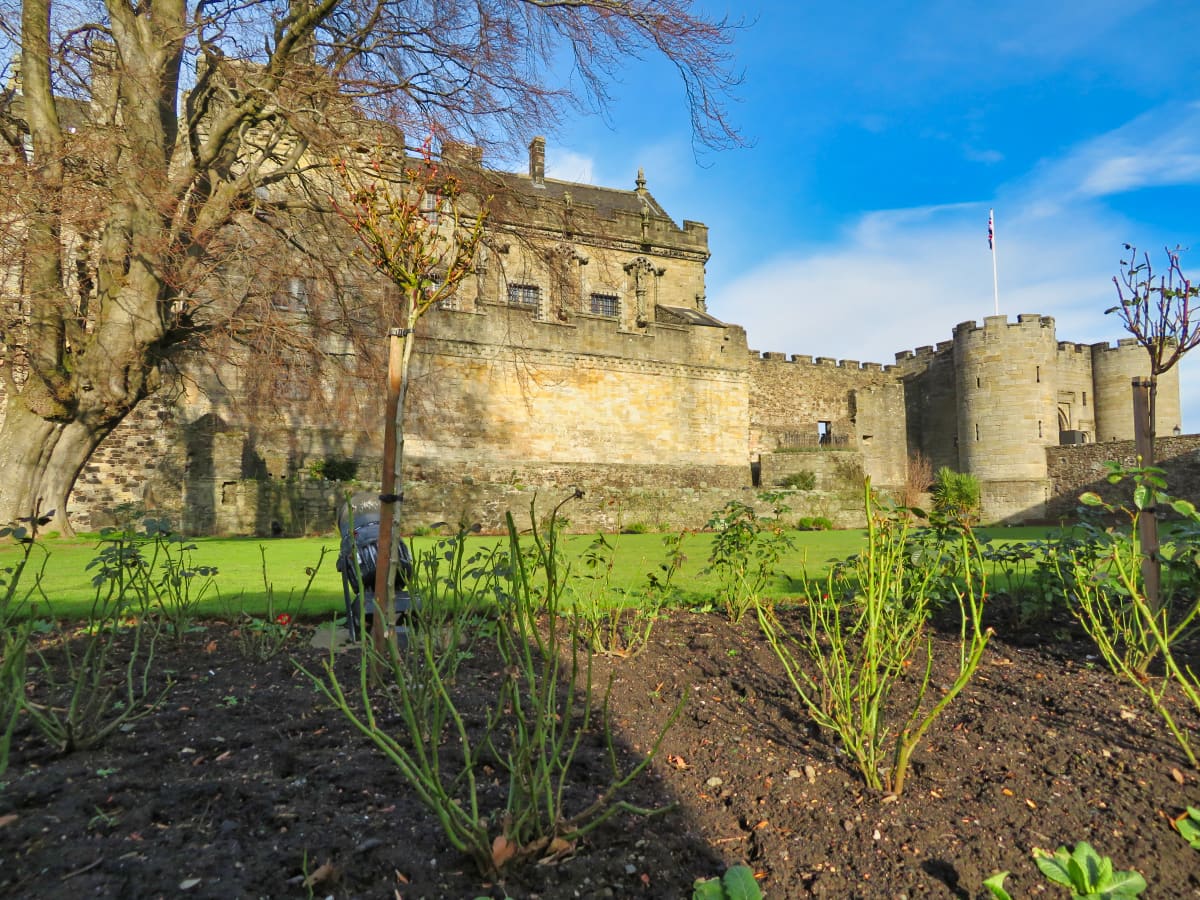
Protect Your Family From Scotland's Biting Midges
- Powerful, reliable protection for up to 8 hours
- Water- and sweat resistant
- Repels midges, mosquitoes, horse flies, sand flies, fleas and ticks
- Safe for use on adults, children over 30 months and pregnant women
- Non-sticky, moisturising with a pleasant fragrance
- Packaging may vary
Tourist Information
There are lots of reasons to visit Stirling Castle, whether it’s to soak up the atmosphere or learn about its history. As soon as you walk up to the main castle esplanade, you can’t fail to be impressed. It just dominates the skyline, and as you head towards the entrance, you begin to understand why this place was chosen as the seat of royal power for hundreds of years.
If you go there for the history, I recommend joining a guided tour as you’ll get insights into the inner workings of the castle that you’ll never discover by yourself. Alternatively, if you’d rather take things at your own pace, you can pick up a portable audio tour from the ticket office (available in several languages) and follow its directions instead.
In addition to touring the castle, there are lots of events happening throughout the year such as the recreation of a royal Christmas in December and various battle re-enactments during the summer. There are interactive exhibitions too, including the palace vaults which have displays covering the history of the castle from its earliest times to the present day, and the Stirling Heads gallery which features unique wooden carvings rarely seen elsewhere in Scotland.
And if all that isn’t enough to keep you occupied, there’s a regimental museum that celebrates and commemorates the battles of the Argyll and Sutherland Highlanders.
In addition, you can relax in the Queen Anne gardens (if the weather allows), and there’s also a café to sit down and take a rest with lovely countryside views from its rooftop patio. And as always with Scotland’s top tourist attractions, you can pick up a souvenir or two from one of the attraction’s gift shops.
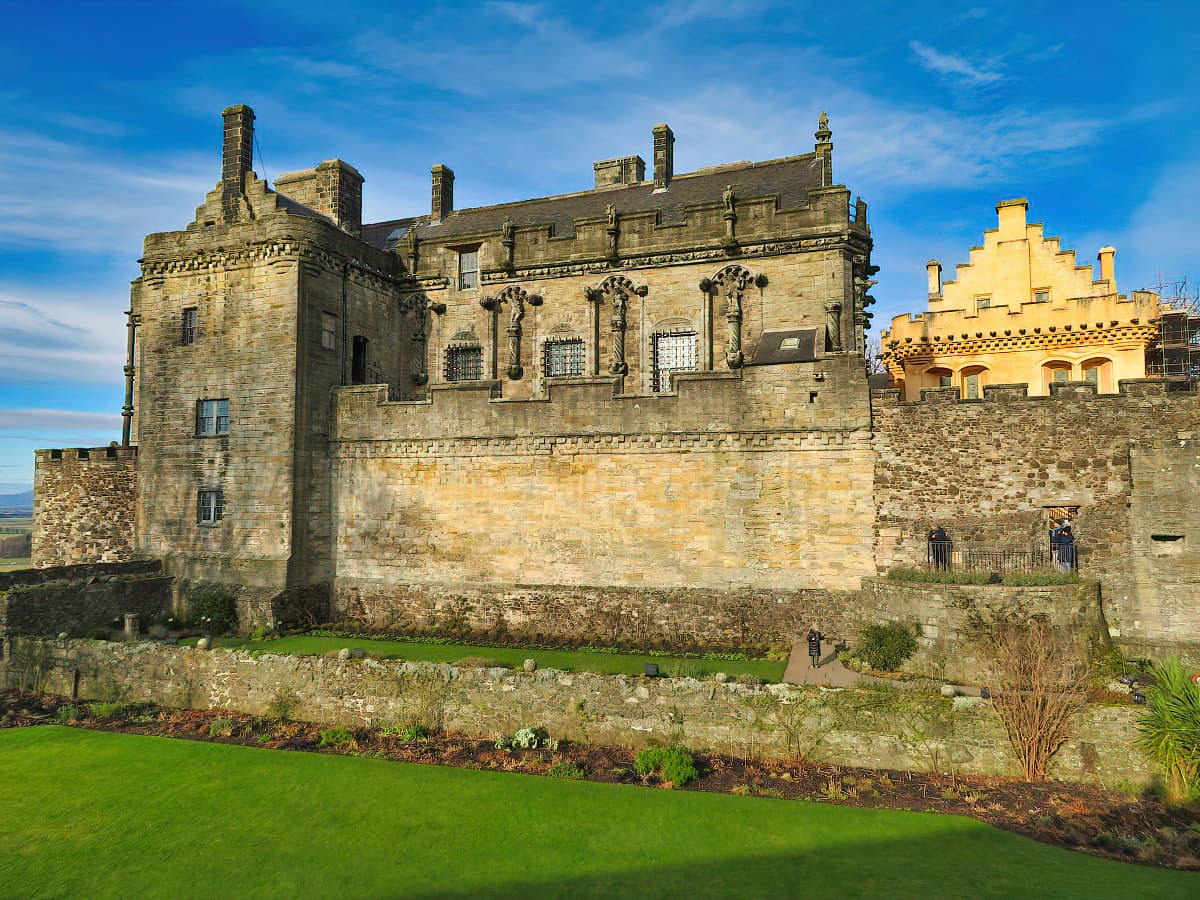
Royal Palace
While Robert the Bruce is best known for his victory against invading English forces at the Battle of Bannockburn, his descendants, Robert II and Robert III, are known for establishing a fortress in Stirling.
Built in the Renaissance style, the Royal Palace and the Great Hall look more like the buildings you’d expect to see in Rome or Paris than the imposing fortresses you’ll find elsewhere in Scotland. The Great Hall, in particular, is stunning, with the Royal Gold harling that covers its exterior making a fantastic backdrop for photos as you stand in the castle’s main courtyard.
Head inside this magnificent banquet hall and you’ll discover huge windows lighting a gigantic room, which would have been cosy even in the middle of winter thanks to five large fireplaces built into the walls. There are even separate galleries for minstrels and trumpeters inside the hall, and you can only guess how lavish the dances and feasts must have been back in the day.
It’s in this building where Mary Queen of Scots spent most of her childhood, and she’d have enjoyed a fair amount of luxury, even by today’s standards. Brightly coloured tapestries cover the walls (now restored to their former glory), and original paintings and furniture offer a glimpse into the life of Scottish royalty in the 1500s.
And for extra authenticity, visitors can interact with tour guides dressed in character costumes who’ll be happy to tell you about the people and the politics associated with the castle over 500 years ago.
The castle is also famous for its ghosts, and many tourists have reported seeing a man dressed in traditional Highland clothing walking around in the shadows. As he’s so elaborately dressed, people think he’s a tour guide so they wander over to talk to him, but rather spookily, the Highlander simply turns away and vanishes into thin air!
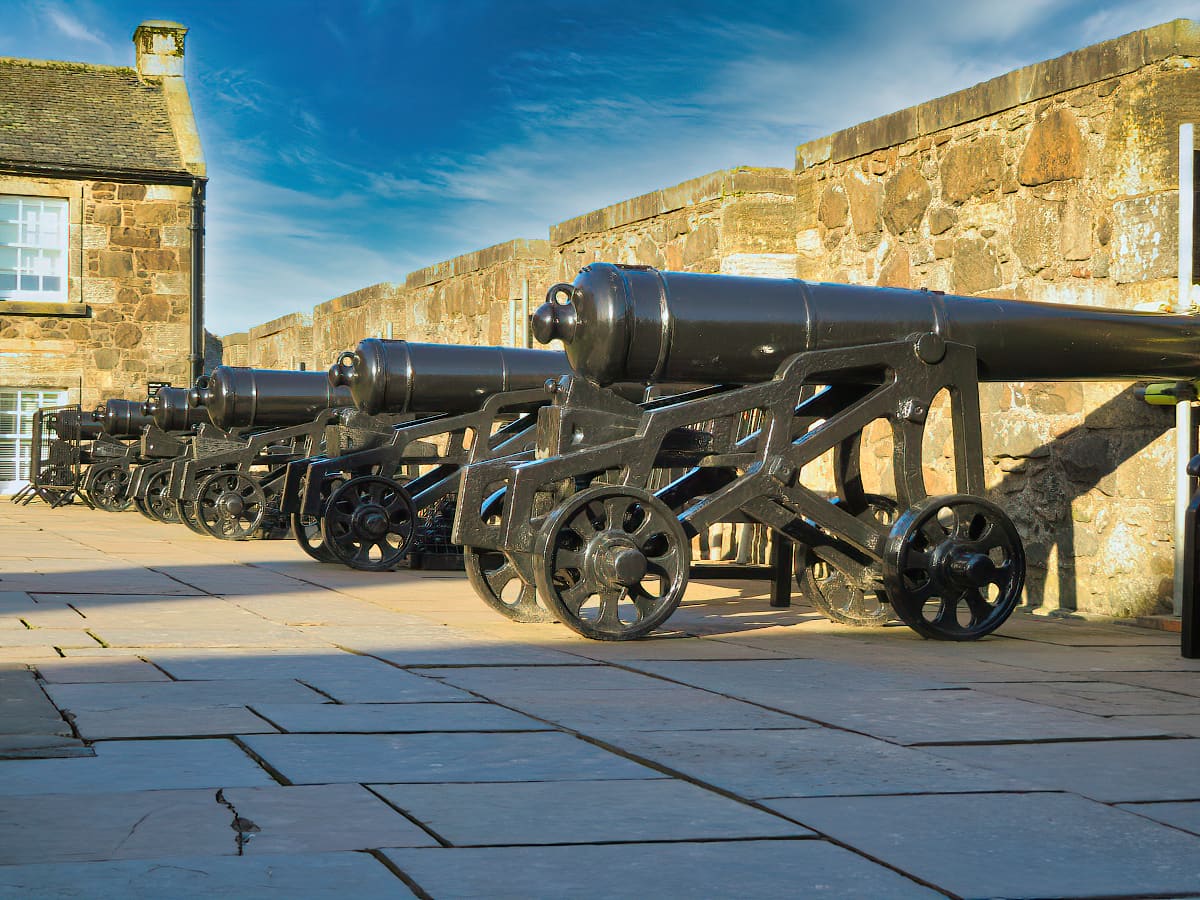
Things to Do
Explore the Royal Palace: Dive deep into Scotland’s history by exploring the Royal Palace, a Renaissance building where Scotland’s royalty once lived. Each room is a treasure trove of artefacts and period furnishings, and you might even be transported back in time thanks to costumed characters in some of the rooms.
Visit the Great Hall: The Great Hall, built for James IV in 1503, is one of the largest and most impressive of its kind in Scotland. Its vaulted wooden roof and grand fireplaces are a sight to behold and it’s easy to imagine how grand the banquets and royal gatherings must have been back in the day.
The Stirling Heads Gallery: This gallery offers an interactive experience, showcasing a collection of oak medallions known as the ‘Stirling Heads.’ Learn about the castle’s history through these intricately carved heads which depict kings, queens, characters from the bible, and classical mythology.
Tours: To immerse yourself in the history of Stirling Castle, take an audio tour from the ticket office and walk around the castle at your own pace. Alternatively, take a guided tour with knowledgeable guides to learn fascinating details about the castle, including its previous occupants and significant events that occurred over the years.
Stroll around the Castle Gardens: The castle’s gardens, with their manicured lawns and colourful borders, are a lovely place to stroll around on a sunny day. Take in the peace and quiet of the Queen Anne’s Garden or look over its walls for stunning views of the surrounding countryside.
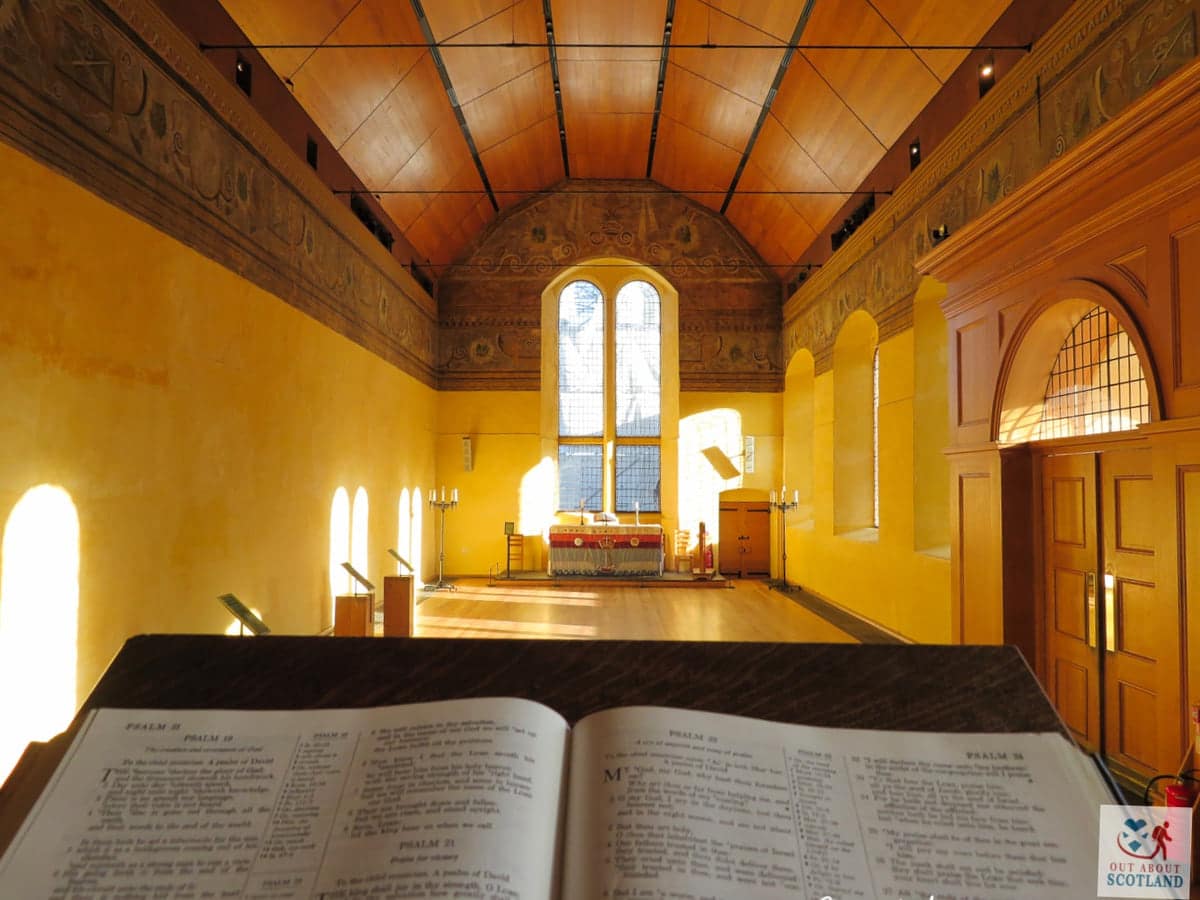
Book Tours in Scotland
Things to Do Nearby
Church of the Holy Rude. St John St, Stirling FK8 1ED. 3-minute walk.
A 15th-century church that is still an active place of worship. The church hosted the coronation of King James VI in 1567. It is open to the public when services are not running.
Stirling Old Town Jail. St. John St., Stirling, FK8 1EA, is a 3-minute walk.
A history-themed tourist attraction that takes visitors on a journey through the 170 years that the building served as a prison. Prison guards take visitors on a tour of the jail to show them what it was like for inmates in the 1800s.
Argyll’s Lodging. Castle Hill, Stirling FK8 1EG. 2-minute walk.
A 17th-century nobleman’s home that was built for those serving the royal court at the castle. Most of the tapestries and original artworks are on display. Entry to Argyll’s Lodging is by guided tour only.
The King’s Knot. 4-minute drive.
A large green space below Stirling Castle that was once the recreation area for royalty. At one time formal gardens were laid in the park but now only the earthworks remain.
Old Town Cemetery. Stirling FK8 1EG. 1-minute walk.
This extensive cemetery sits between Stirling Castle and Holy Rude church. It contains a number of historically important monuments including the Star Pyramid and the Martyrs Monument.
Frequently Asked Questions
Is Stirling Castle worth visiting?
Stirling Castle is definitely worth visiting. It rates 4.5/5 on TripAdvisor and #5 of 97 things to do in Stirling. The castle is famous for its royal quarters, Great Hall, and regimental museums.
Why is Stirling Castle famous?
Stirling Castle was once the main royal stronghold in Scotland and had even more importance than Edinburgh Castle.
It was the childhood home of Mary Queen of Scots and James VI and was a major player in the Wars of Independence when it changed ownership 8 times in 50 years.
It was also an important military base for the Argyll and Sutherland Highlanders regiments, and today it is one of the most-visited tourist attractions in Scotland.
Did Mary Queen of Scots live in Stirling Castle?
Mary Queen of Scots spent her childhood years in Stirling Castle. She moved from Linlithgow Palace to the castle on the 27th July 1543.
She was crowned ruler of Scotland just six weeks later and spent the next four years in Stirling Castle for her own safety.
Who lives in Stirling Castle now?
No one lives in Stirling Castle today. Historic Environment Scotland owns and operates it as a historic tourist attraction.
Protect Your Family From Scotland's Biting Midges
- Powerful, reliable protection for up to 8 hours
- Water- and sweat resistant
- Repels midges, mosquitoes, horse flies, sand flies, fleas and ticks
- Safe for use on adults, children over 30 months and pregnant women
- Non-sticky, moisturising with a pleasant fragrance
- Packaging may vary



